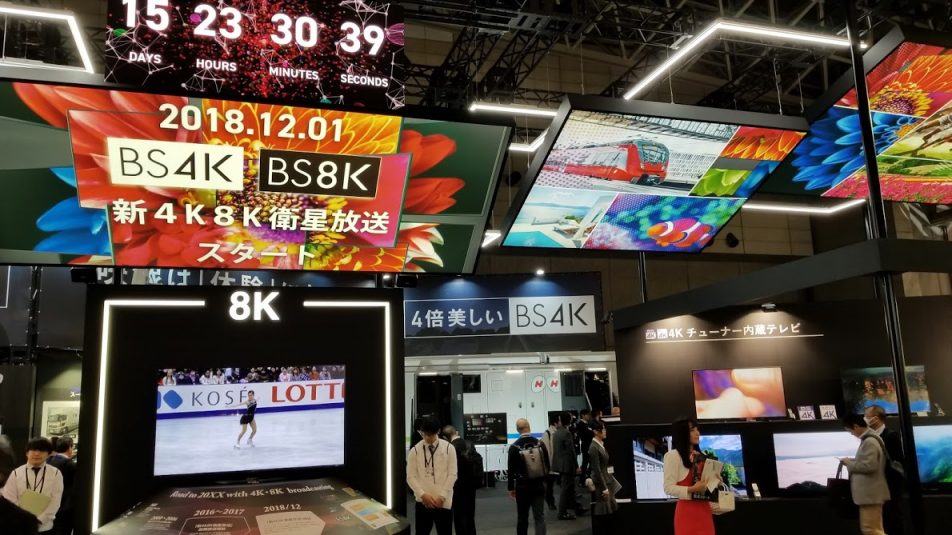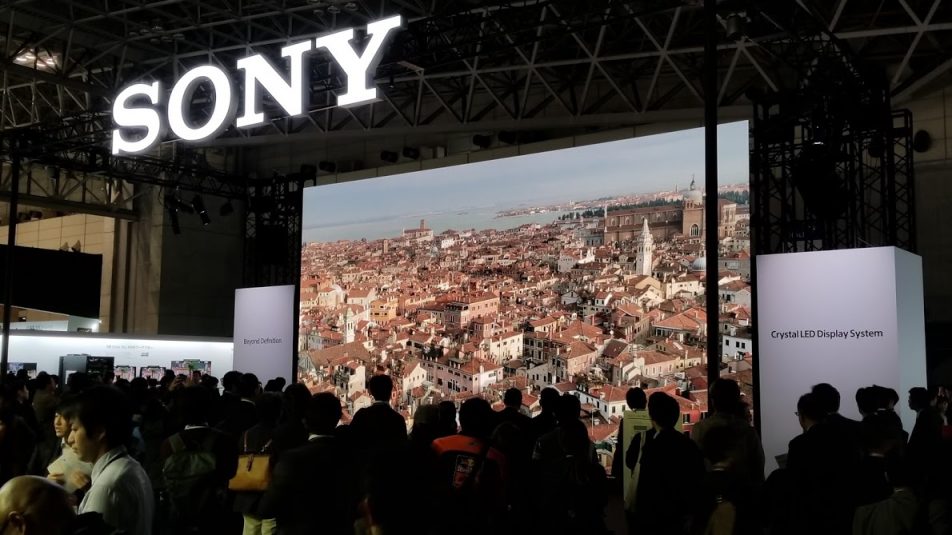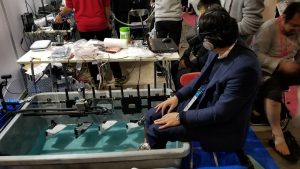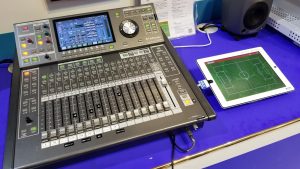8K Buzz Becomes Reality in Japan; Inter BEE 2018 Highlights 12 Gbps, VR, Next-Gen Replay
Event marks official launch of 8K broadcasts in Japan
Story Highlights
Inter BEE, the Japanese equivalent of the NAB Show, is always a unique show for those involved in the broadcast and production industry. It is squarely focused on the needs of the Japanese broadcast industry, and that makes it an interesting mix of a commitment to known technologies (one of the big themes this year was 12-Gig SDI) and a commitment to the future with (another big theme was 8K, which is now a reality for consumers in Japan).

The NHK booth at Inter BEE featured a countdown to the launch of NHK’s 8K service.
Let’s start with the big news of the official launch of 8K broadcasts (as well as 4K) via satellite. The 8K signal, called BS8K, requires 100 Mbps of bandwidth to be delivered, and the broadcasts are available 12 hours a day. That 12 hours, like the early years of HD in the U.S., comprises a mix of original full-resolution material as well as upconverted material (audio is in 22.2-channel surround sound). Highlights so far include an 8K broadcast of 2001: A Space Odyssey as well as a live broadcast from the Vatican on Dec. 2. NHK also continues to roll out 8K production units that can be deployed around Japan, and the goal is to have five in operation by the time the 2020 Tokyo Olympics begin.
Eutelsat is a key partner in the delivery efforts, and NHK relied on DVB-S2X modulation, in 16APSK, and HEVC encoding for the Vatican live shot. The images were shot at 60 frames per second in BT2020 color space, with 10 bits of color depth and high-dynamic-range HLG (hybrid log gamma), combined with 22.2-channel audio.

Sony’s booth at Inter BEE was highlighted by a massive 8K video wall.
The launch garnered mixed headlines, and it will be some time before it will garner large audiences. The consumer-electronics industry will most likely roll out a number of 8K sets at next month’s CES (Sharp is currently selling a 70-in. set for about $12,000), and the 8K receiver tacks on an extra $2,000. Of course, anyone suffering sticker shock at those prices should consider that 4K sets were at that level only a few years ago so prices could fall within a couple of years.
SVG has discussed the production of 8K over the years, and, since the 2012 London Olympics, the format has made some serious strides that are worth keeping in mind. For example, in 2012, recording the events for replay required 36 Panasonic P2 decks to be slaved together. Today, that, thankfully, is not the case.
And yes, camera signals are still a massive 48 Gbps each, but the number of cameras involved in the production continues to grow, and their features, like slow-motion replay, also continue to expand.
NHK is currently the only broadcaster on the planet to commit to 8K, and it is worth noting that, when people ask “why?,” NHK was committed to 8K before 4K was a legitimate format. The why was simple: there was (and still is) a belief that 4K did not offer enough of a difference from 1080p in terms of picture quality to make it a worthwhile step. But 8K opened up a number of new applications, such as live broadcast to cinema screens, and also would provide a signal that could support massive screens that measure more than 120 in. diagonal.
NHK’s commitment, however, is enough to have a number of manufactures on the show floor at Inter BEE 2018 displaying 8K production systems. Sony, Ikegami, Astrodesign, For.A, and others rolled out various 8K-capable production components. And there actually is a practical application for an 8K camera today. It could be mounted within a stadium and capture a wide shot of the entire field of play and allow 1080p segments to be extracted and broadcast, enabling a single camera to do the work of multiple cameras and never miss a moment. And, of course, if 4K can turn the corner as a production format, there could eventually be a need for 8K cameras to serve in the role of virtual zoom cameras so that a full 4K image could be extracted (similar to the role 4K cameras in extracting Full HD images for replay).
The other big story at the show was support for 12-Gbps transport. 12 Gbps-capable products were found in a number of booths, and, for many Japanese production professionals, familiarity with SDI architecture makes 12 Gbps more compelling than IP.
Advances in Next-Gen Replay
One of the highlights of the Canon stand this year was a next-generation version of the company’s 360-degree replay systems, which take video from multiple cameras mounted around a stadium, synthesize it, and allow a replay from virtually any angle, as well as the ability to zoom in and move between players and objects.
It’s called Free Viewpoint and has made some strides since last year. Canon offered a demo of footage from rugby matches captured with 100 cameras located around the upper level of the stadium. The demo was impressive as the large number of cameras gave plenty of additional picture information to enhance the quality of the view. The problem? It still takes a long time to synthesize all of the data. However, the Canon team hopes to reduce processing time significantly by the time the 2020 Olympics begin. Here’s a YouTube clip of last year’s version for a sense of what will eventually be offered (the new version, however, is more photorealistic).
Another cool technology demonstration was courtesy of Tokyo Broadcasting Systems (TBS). Called Virtual Grabber, it is designed to bring VR to technical directing. An operator outfitted with VR goggles and VR pointer hand controls was able to cut a show by looking at a virtual monitor wall and pointing and clicking on the monitor what he wanted to cut to. After only a few minutes, however, it became clear that a lot of physical exertion is definitely involved (which may be a good thing) as shown in this videoclip.

A VR footbath was one of the more unique experiences on display at Inter BEE.
There were other experimental uses of VR that were designed to merge the VR world with the real world to create a new type of experience. For example, in one demo, the VR user would sit on the edge of a footbath and put their feet into the bath and have other virtual guests sitting around the bath. And then there was the VR experience that involved being suspended and crawling through a virtual airduct to detonate a bomb (complete with water mist sprayed in the player’s face). And, for those not wanting to get wet, there were more-traditional VR experiences involving weapons and fighting.

A new Touch Fader tablet (iPad or iPhone) provides an interface for Roland mixers.
Another next-generation interface on display was a Touch Fader tablet interface (iPad or iPhone) for Roland mixers. In a demonstration involving a soccer match, as a user moved a finger around a graphical representation of the pitch, the audio mix would focus on the area being touched.
